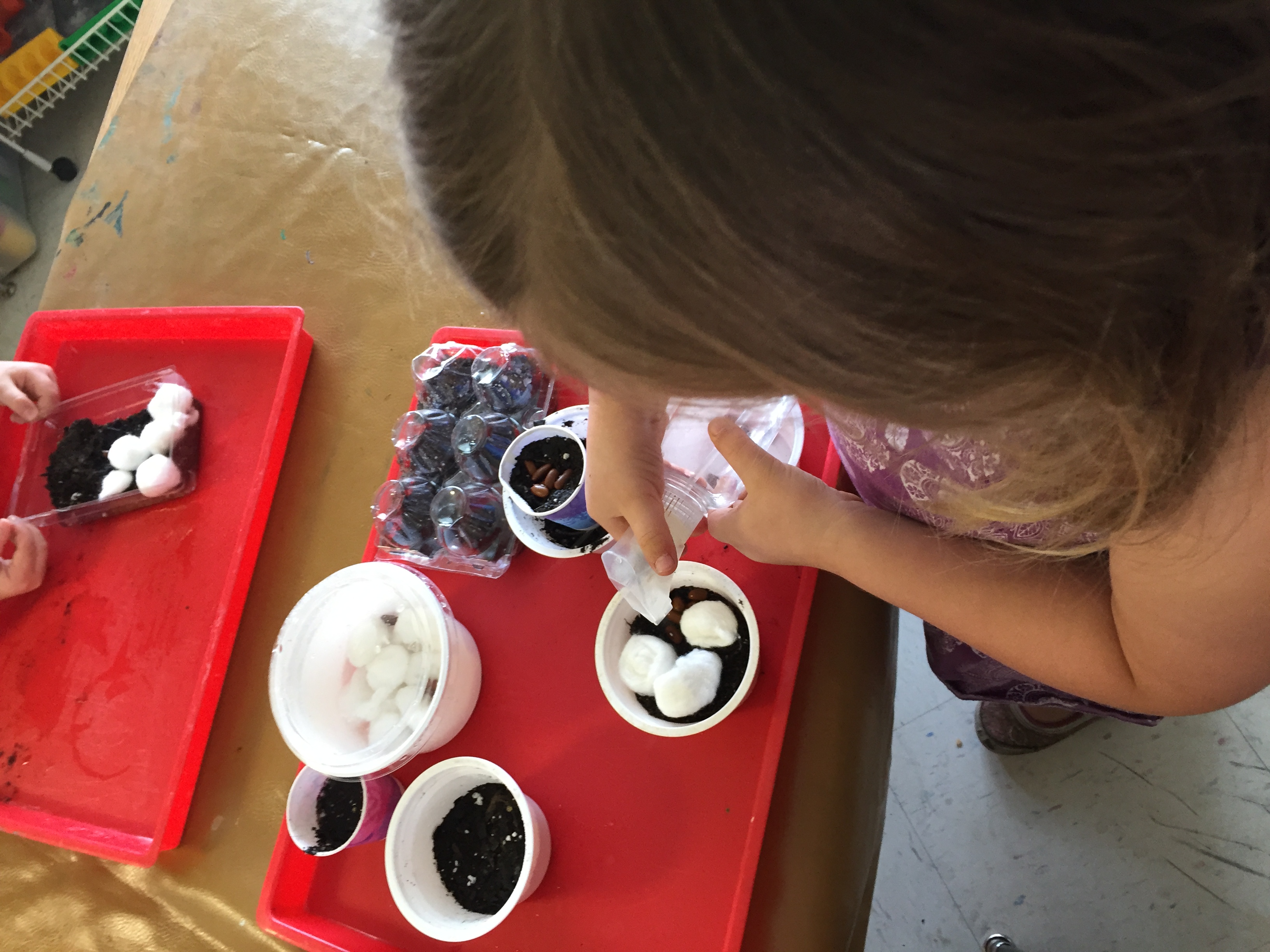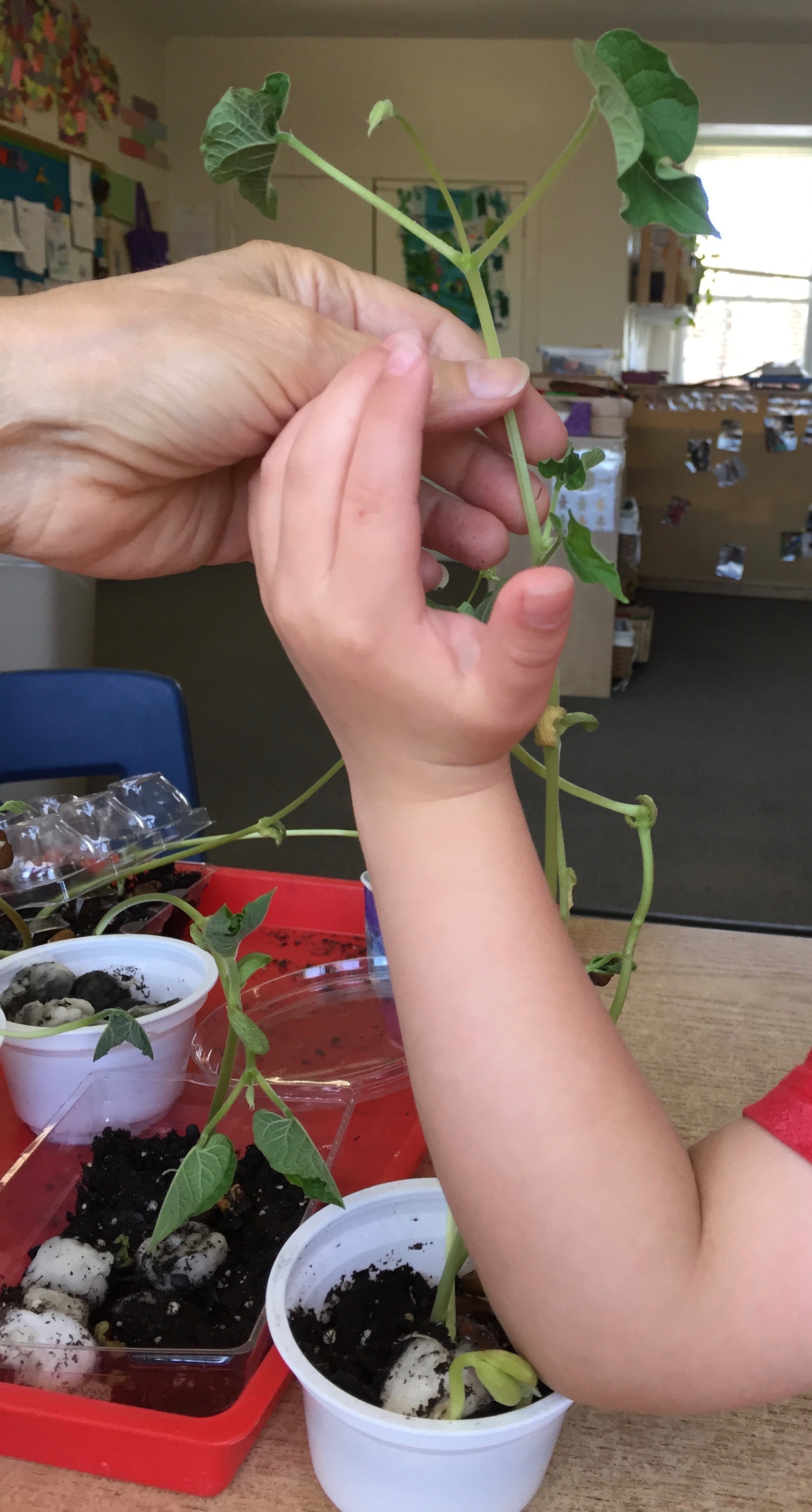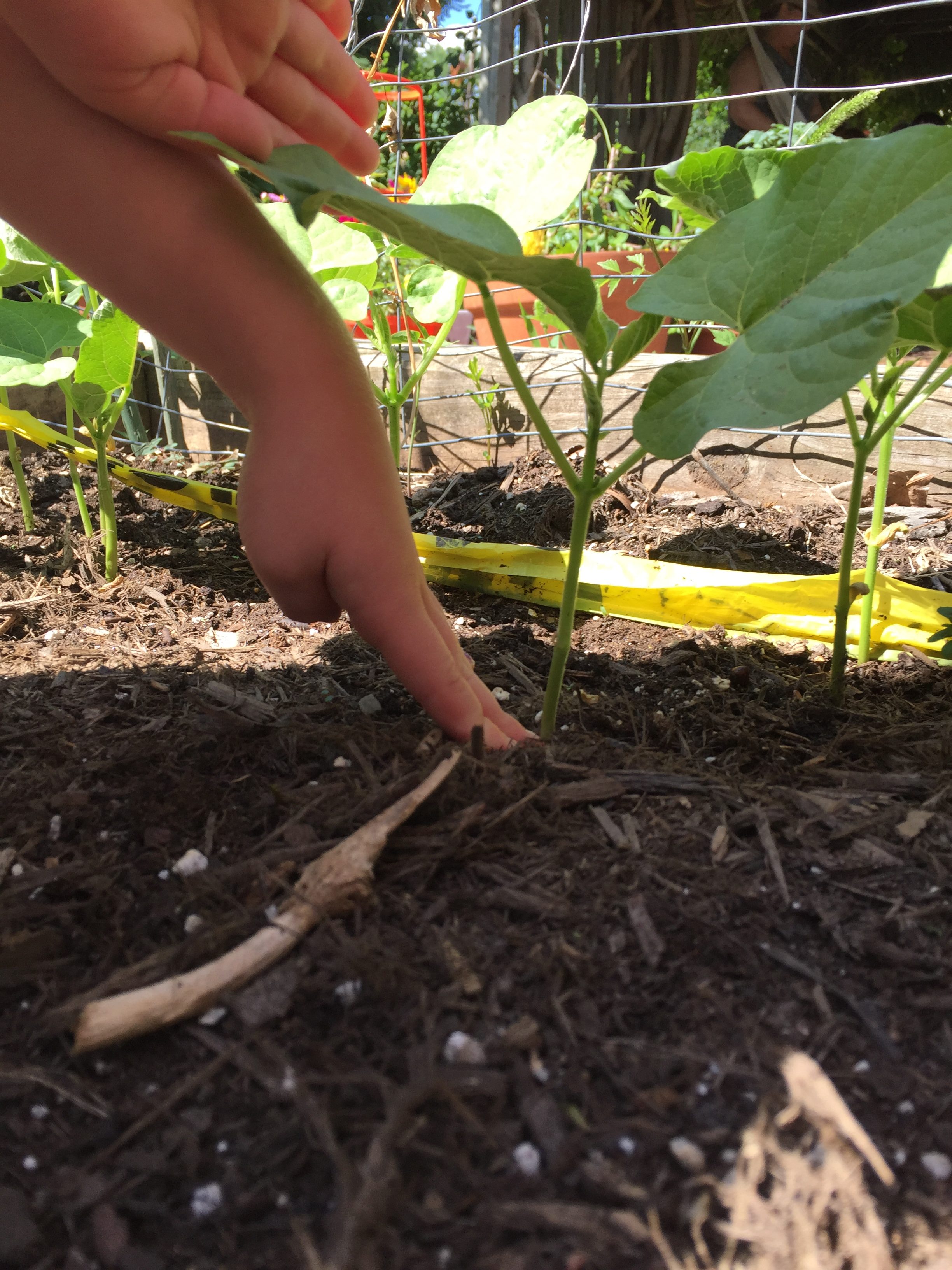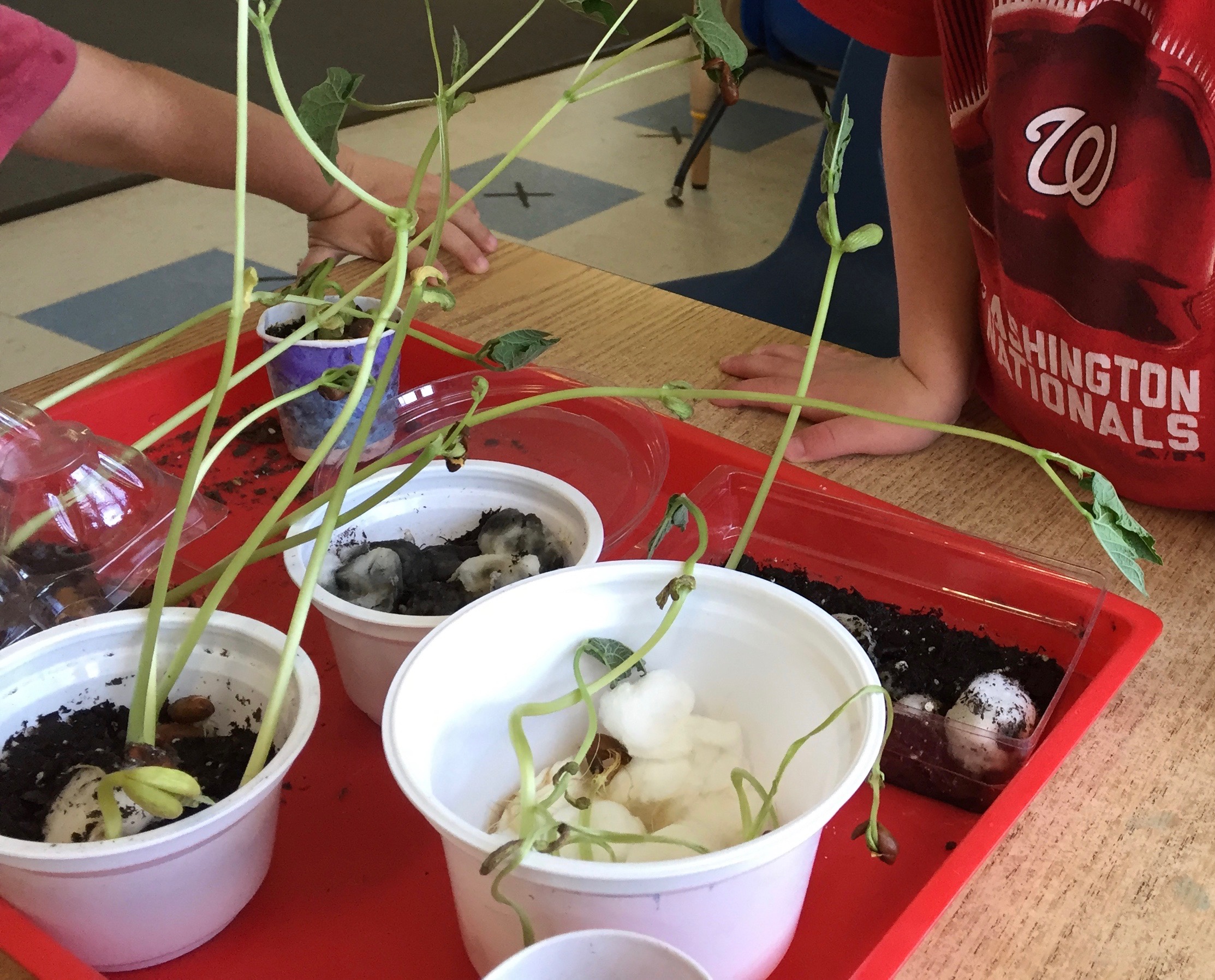Figuring out what seeds need to sprout
By Peggy Ashbrook
Posted on 2017-10-11
 Do seeds need soil to sprout? Many people would say yes. Preschool children may know, or at least are able to recite, that plants need “dirt,” water, and sunshine to grow. Left out is plants’ need for air—a developmentally appropriate omission. Although young children feel and use air, it isn’t until 5th grade that they are expected to be able to infer that air, a gas, is made of many small pieces of matter (PS1.A: Structure and Properties of Matter). Experiencing air through their breaths, feeling the wind, and filling balloons or making bubbles helps children build their understanding of the properties of a gas.
Do seeds need soil to sprout? Many people would say yes. Preschool children may know, or at least are able to recite, that plants need “dirt,” water, and sunshine to grow. Left out is plants’ need for air—a developmentally appropriate omission. Although young children feel and use air, it isn’t until 5th grade that they are expected to be able to infer that air, a gas, is made of many small pieces of matter (PS1.A: Structure and Properties of Matter). Experiencing air through their breaths, feeling the wind, and filling balloons or making bubbles helps children build their understanding of the properties of a gas.
As a solid, soil is much easier for children and adults to see in relationship to plants. As a solid it is often misdescribed as the “food” plants need to grow. Amazingly, plants build their bodies from carbon dioxide in the air using energy in sunlight.
The properties of solids, liquids, and gases can be explored when children plant seeds in systems they design themselves to hold seeds and support their sprouting. Children make interesting choices when they are given an opportunity to create a system for growing plants from seeds. In the October 2017 Early Years column in Science and Children describes how green beans on the lunch menu prompted a closer look at other kinds of beans. The children designed planting systems that reflected their beginning knowledge of seed sprouting and their personal aesthetics. Some used soil, convinced that without it the seeds would not sprout. Others choose the kitchen sink approach, using soil, cotton balls, and lots of water. Seeds were buried under soil and laid on top of it. Water was the one material that all children chose. Yes, every seed sprouting system had some success.
Children later noted that the seeds they planted outside in the garden looked better, stronger, and eventually produced beans while those indoors soon grew tall and fell over.
As changes to the plants happened more slowly, children lost interest and stopped watering. With repeated seed sprouting experiences and discussion to reflect on the changes they observed, children may build an understanding of (most) seeds’ ability to sprout when kept damp, and identify other needs of plants.
What kinds of materials do you think your children would choose for their seed sprouting system?
Disclaimer: The views expressed in this blog post are those of the author(s) and do not necessarily reflect the official position of the National Science Teaching Association (NSTA).







